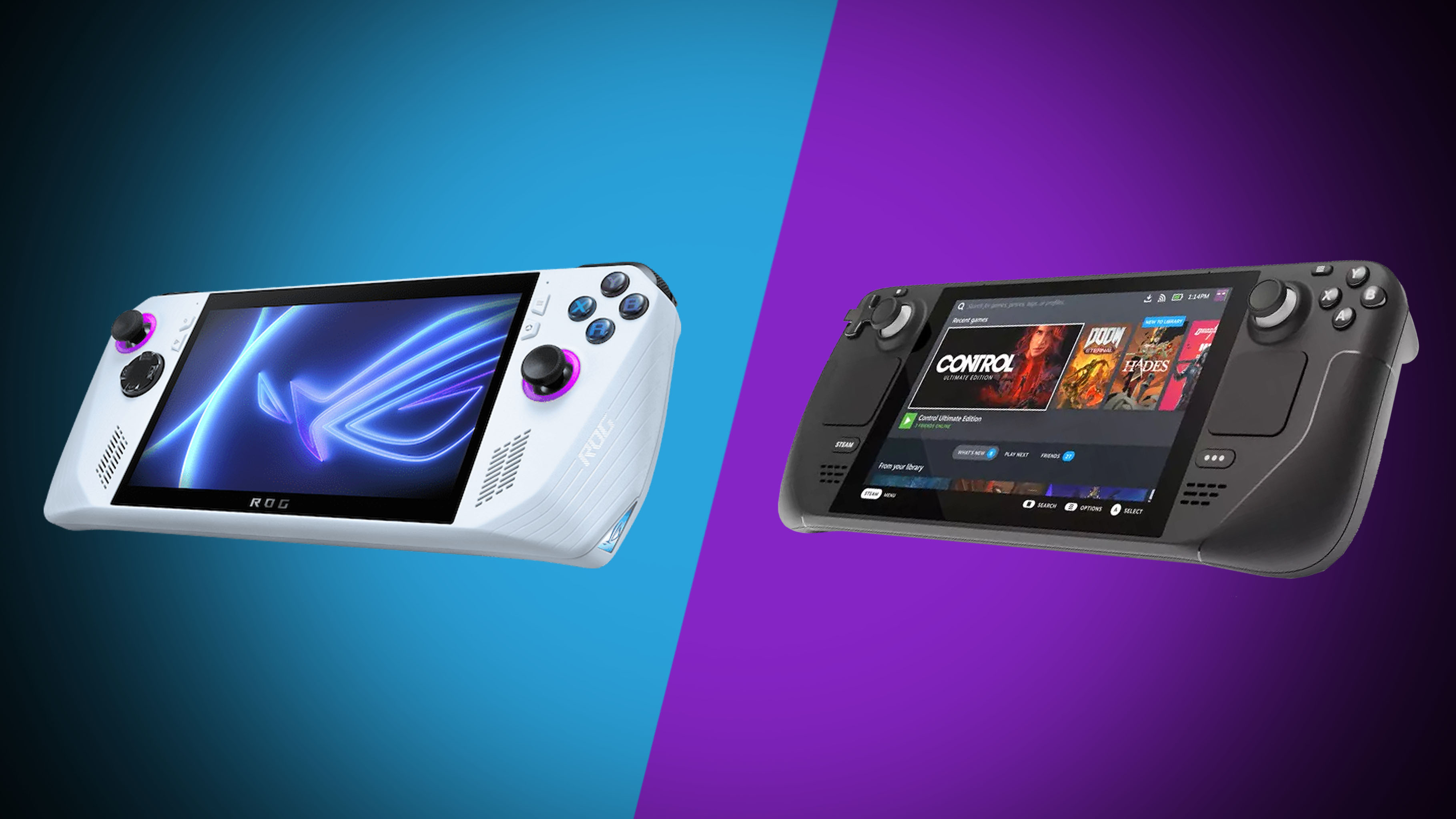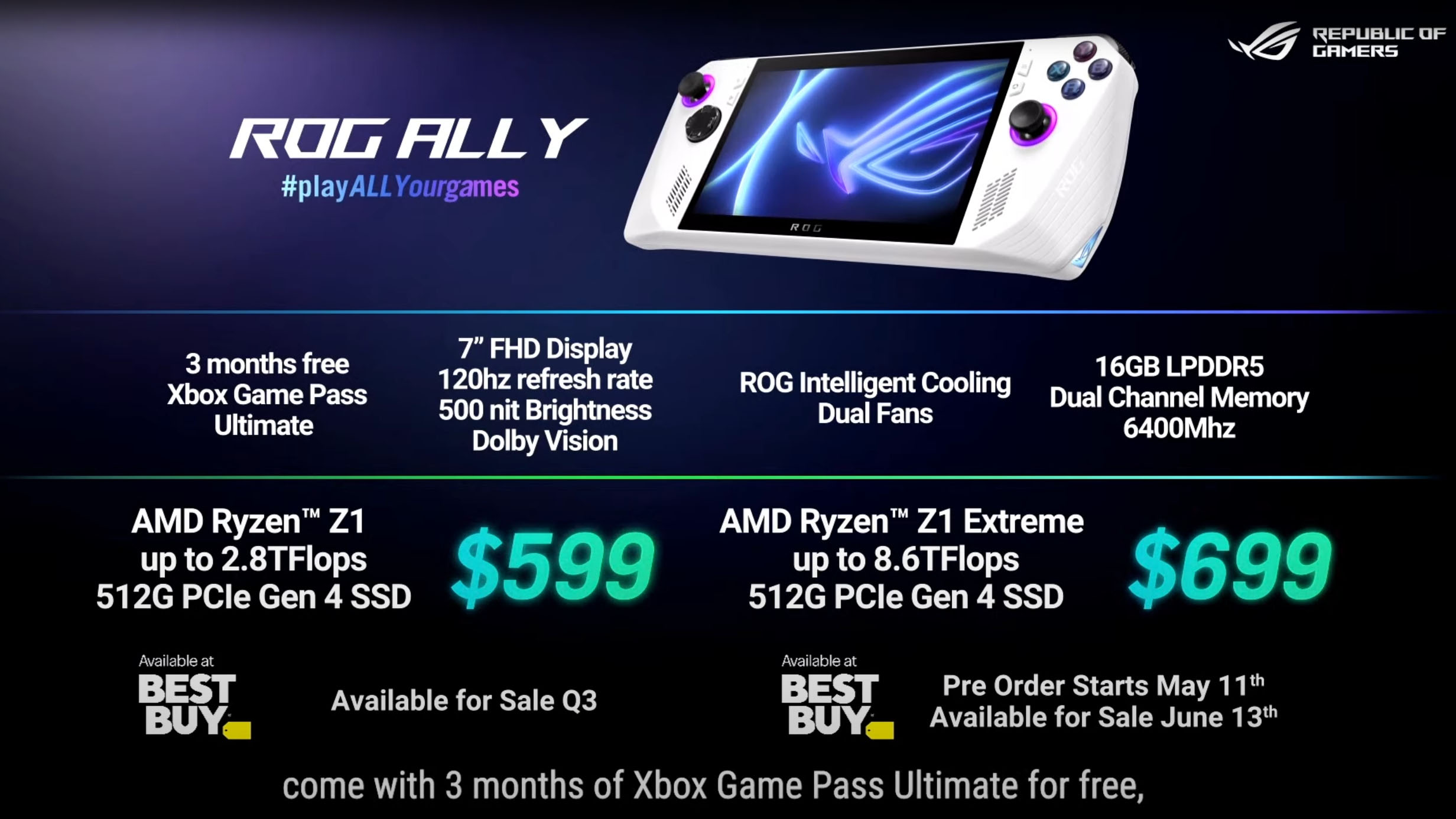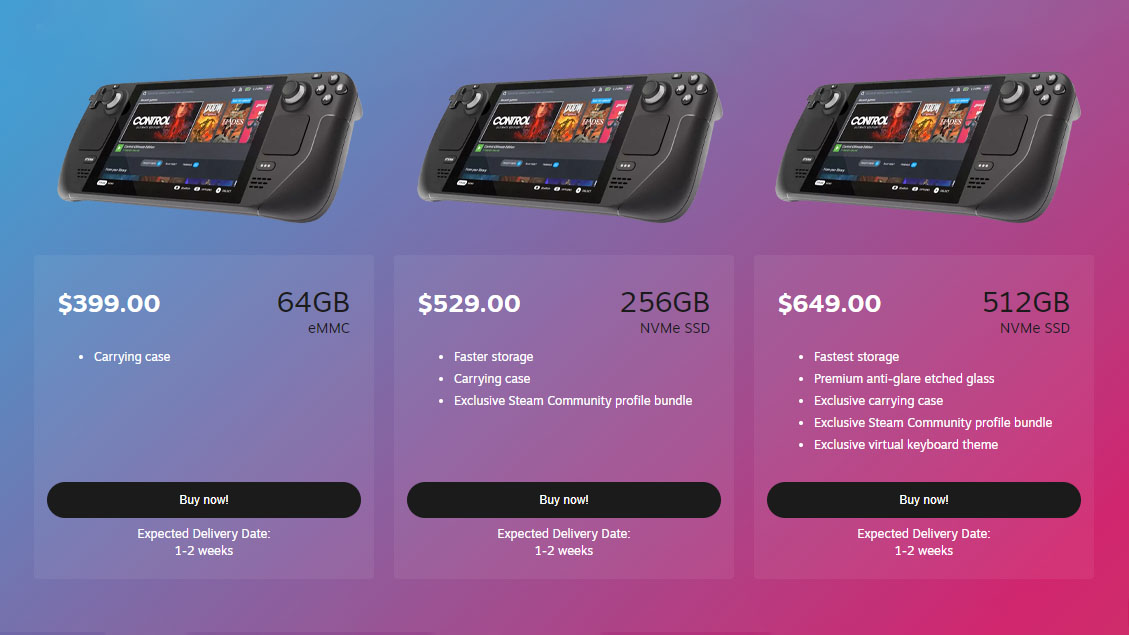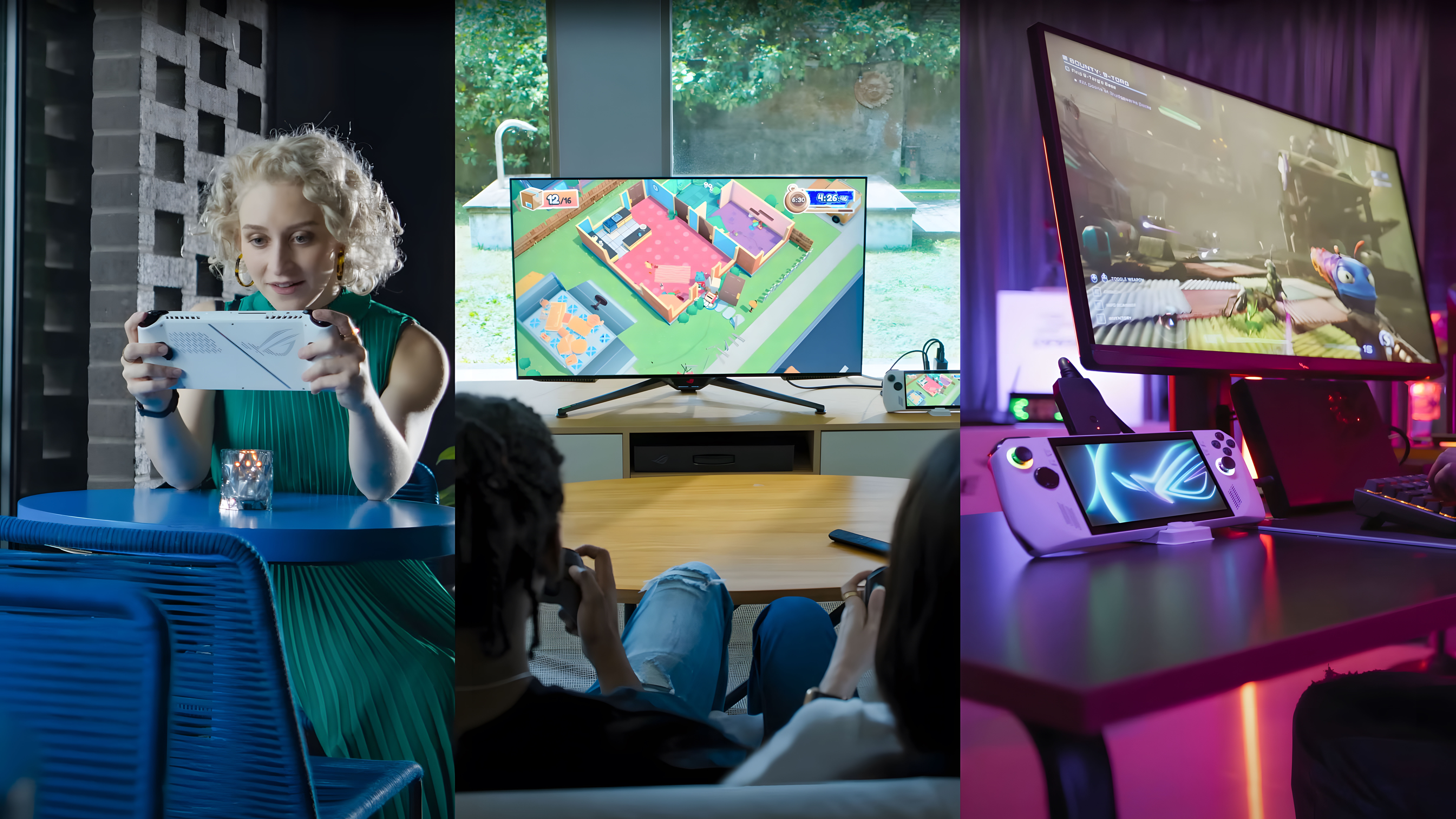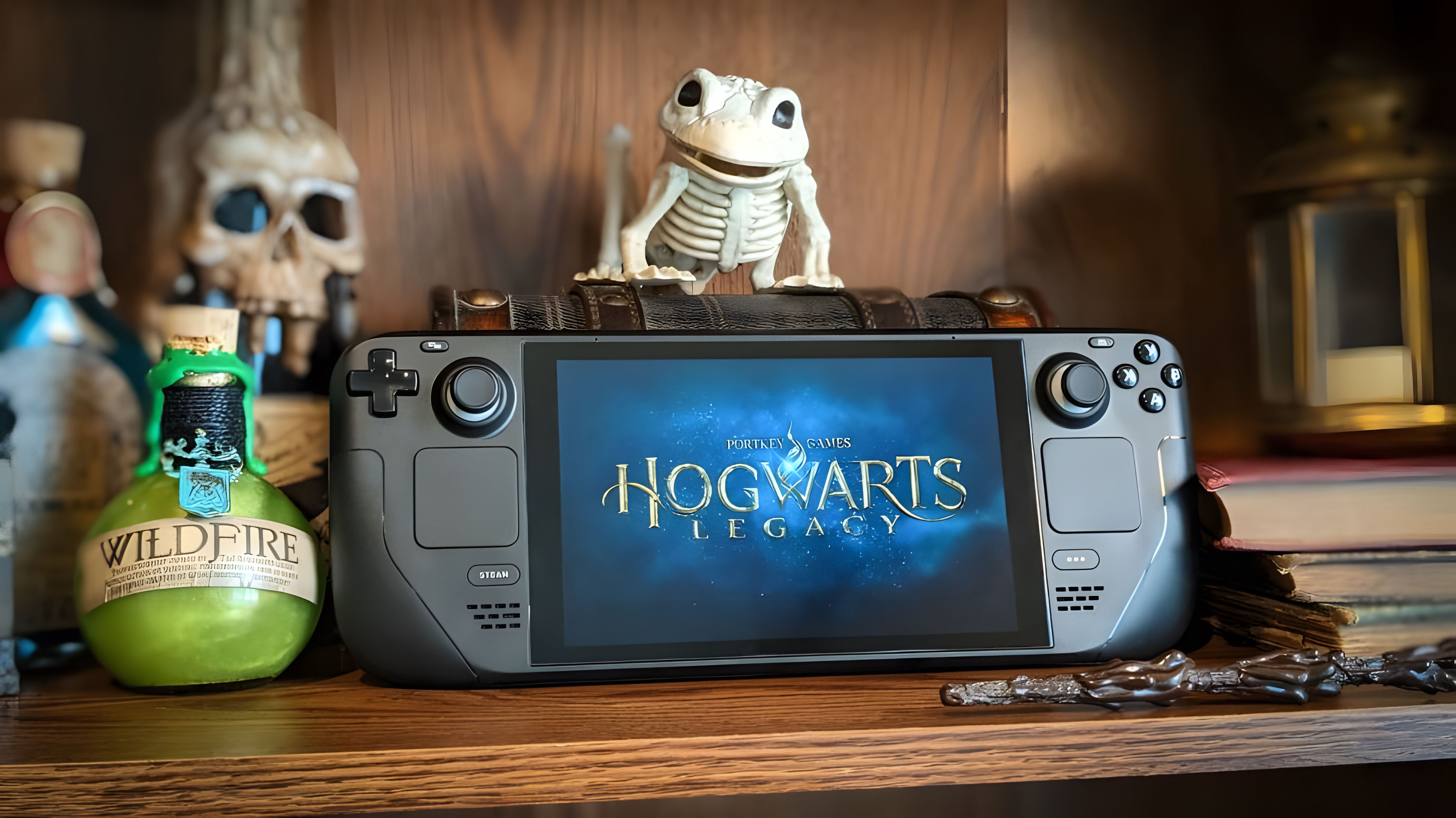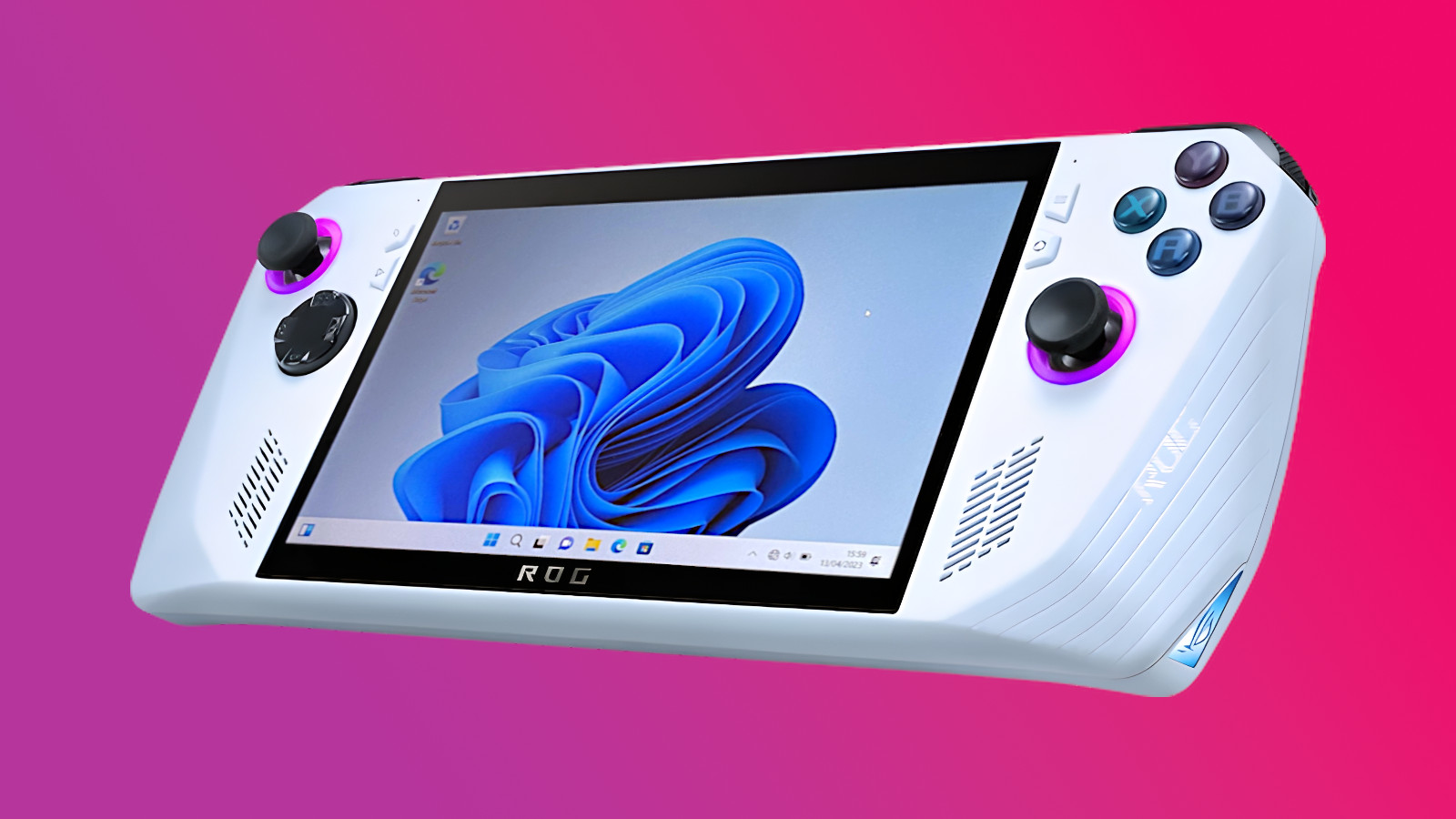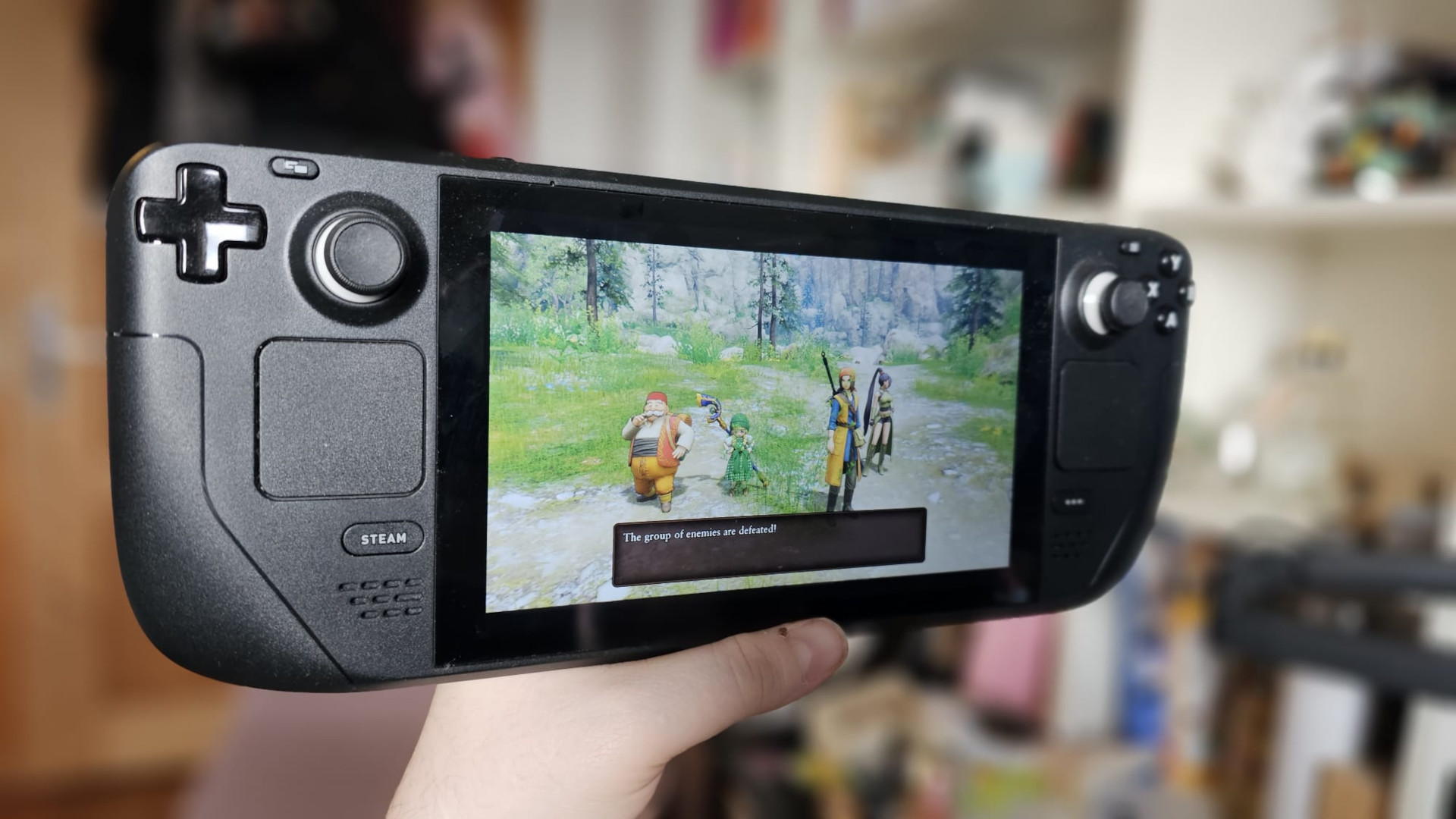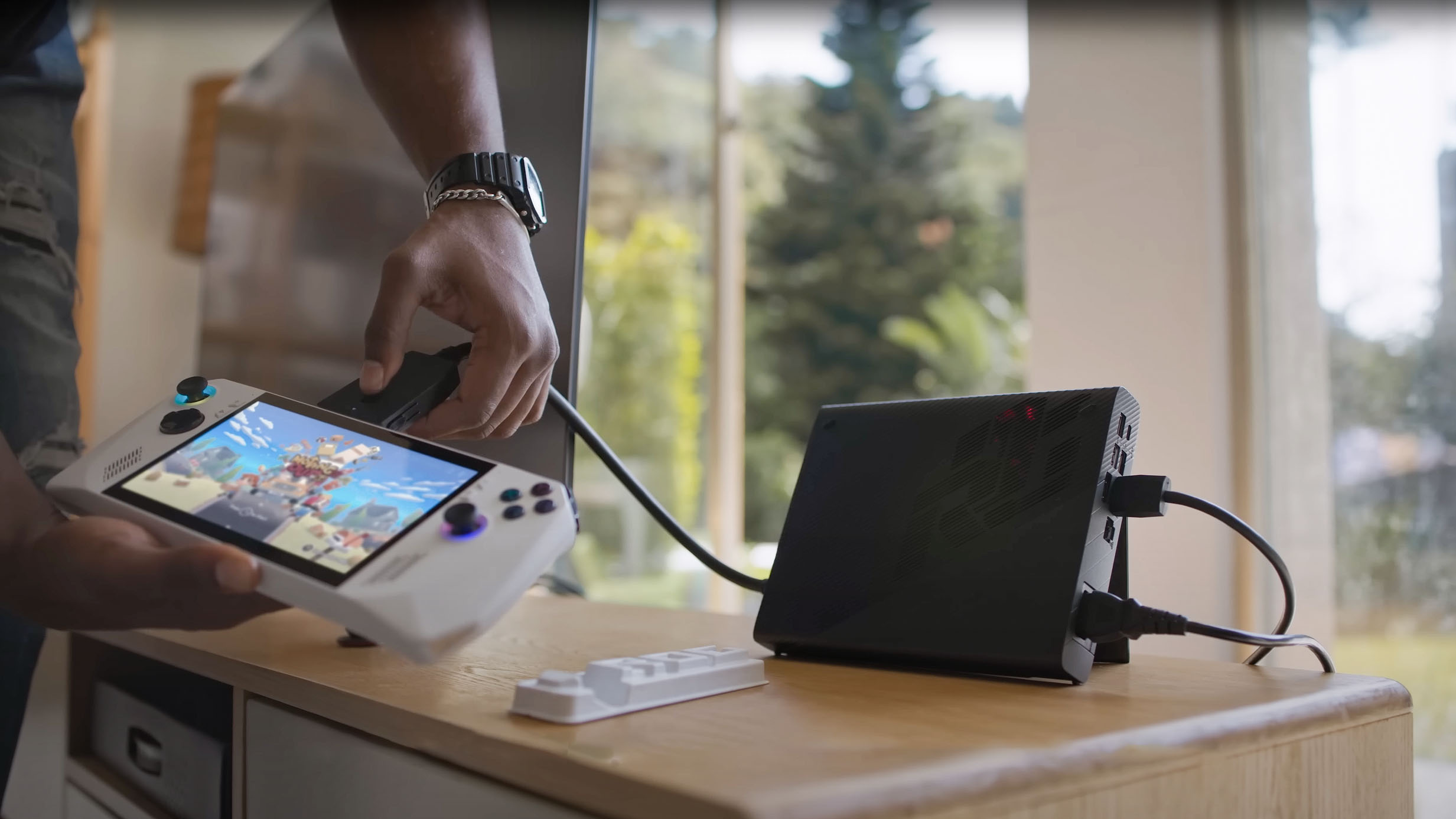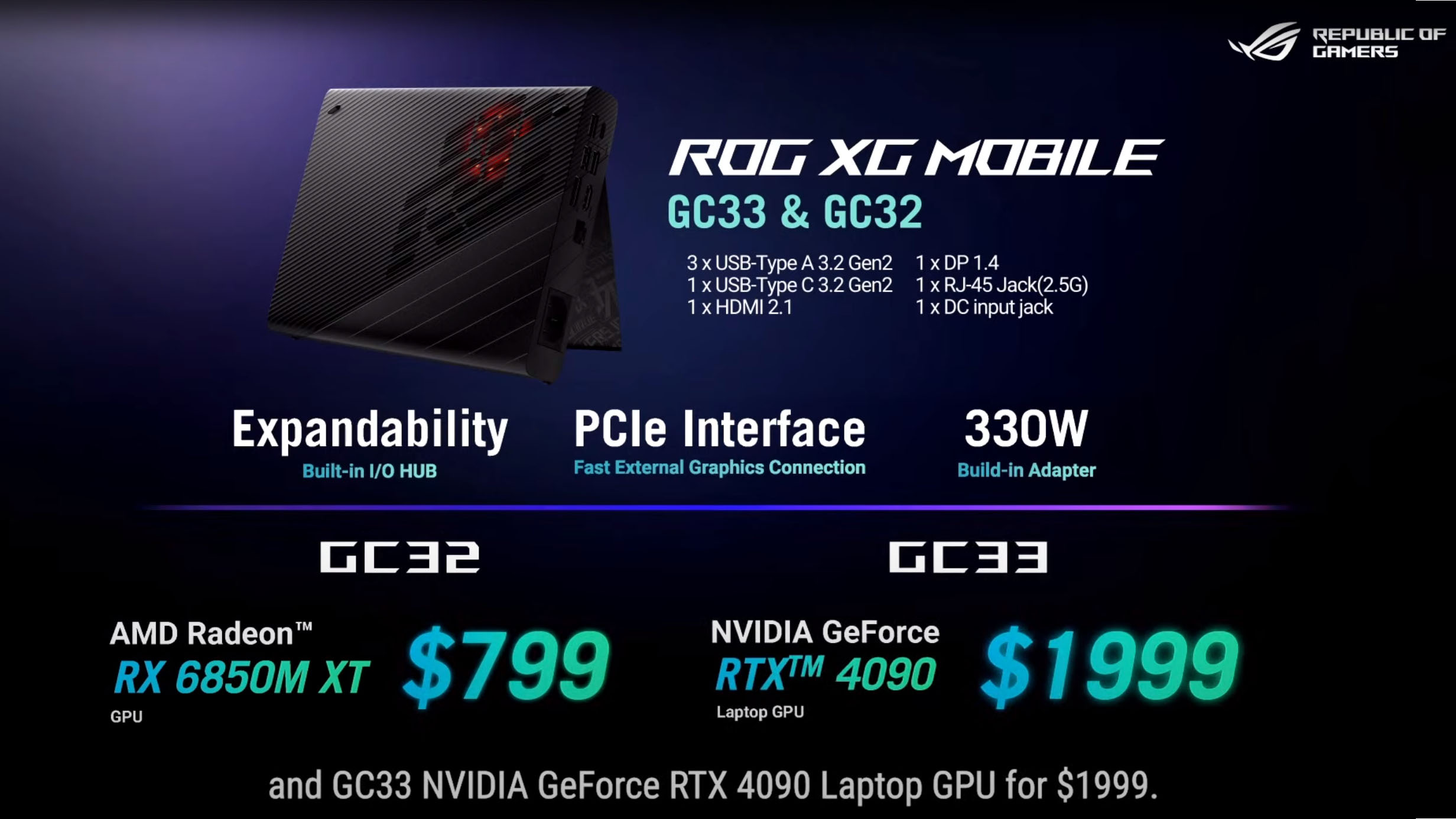Steam Deck vs ROG Ally: Which gaming handheld is better?
Both gaming handhelds are good, but one is far more versatile right out of the box.
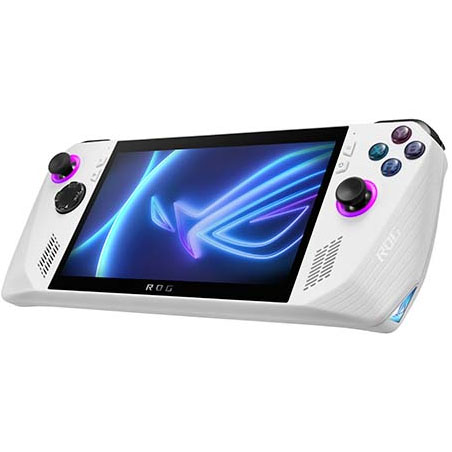
With more powerful components and a higher-resolution display, the ROG Ally is the Steam Deck's biggest competitor. It supports higher resolution and has a better screen to help game imagery look a whole lot better than on Steam Deck. Since it uses Windows 11 it works with just about any gaming service right out of the box, but it is a bit pricey and the battery life isn't the best.
Pros
- Great performance
- Higher-resolution display
- Works with any Windows 11-compatible storefront/service
- Smaller and lighter
- Comes at two different prices
- Fingerprint reader
Cons
- Expensive
- Battery life isn't great

Valve's handheld makes it very easy to access compatible games from your Steam Deck library and has amazing trackpads for better control. However, it doesn't work with all Steam games, nor does it give access to other gaming services right out of the box. Of course, many people customize their Steam Deck to make it work with more services. Like the ROG Ally, the Steam Deck also has a very short battery life, which is usual for a gaming handheld.
Pros
- Haptic trackpads
- Familiar control layout
- Works with compatible Steam games
- Comes at three different prices
- Pricier OLED version also available
Cons
- Short battery life
- Doesn't work with all games
- IPS glow
- No screen capture button
Valve's Steam Deck caused a big splash when it was announced a couple of years ago as a handheld device that would allow owners to access their Steam library of video games. But Asus' ROG Ally stepped into the ring shortly thereafter as a new handheld challenger. It stands out with its ability to easily access any storefront right out of the box, rather than being focused on Steam. Thanks to its powerful specs and performance, the ROG Ally can dominate the PC gaming handheld space.
ROG Ally vs Steam Deck: Specs
Before diving further into the differences and similarities between the ROG Ally and the Steam Deck, let's take a look at the cold hard specs — the ROG Ally vs Steam Deck specs.
| Header Cell - Column 0 | ROG Ally | Steam Deck LCD / Steam Deck OLED |
|---|---|---|
| Price | $699 | ($599 version ships in Q3) | $399 | $529 | $649 | (OLED - $549 | $649) |
| Processor | AMD Ryzen Z1 Extreme | AMD Ryzen Z1 | Semi-custom AMD APU code-name "Aerith" (TSMC 7nm) |
| CPU | Zen 4 architecture, 8-core /16-threads, 24MB total cache, up to 5.10Ghz boost | Custom Zen 2 "Van Gogh." 4 cores, 8 threads, 2.4-3.5 GHz |
| GPU | 12 RDNA3 CUs, up to 2.7GHz, 8.6 TFLOP, default 4GB RAM capacity | 8 RDNA 2 CUs, 1.0 - 1.6 GHz |
| Storage | Up to 512GB PCle 4.0 SSD | 64GB eMMC | 256GB NVMe SSD | 512GB NVME SSD |
| Memory | 16GB LPDDR5 on board (6400MT/s dual channel) | 16 GB LPDDR5 @ 5500 MT/s over 4x 32-bit memory channels = 88GB/s total bandwidth |
| OS | Windows 11 Home | Steam OS 3.0 |
| Display | 7-inch FHD (1920 x 1080) 16:9 IPS-level touchscreen, 500nits, 100% of sRGB | 7-inch (1280 x 800) 16:10 IPS touchscreen, 400nits | (OLED - 7.4-inch HDR OLED, 1280 x 800 up to 1,000 nits) |
| Refresh rate | 120Hz | 60Hz | (OLED - 90Hz) |
| Ports | 1x USB-C port, 1x PCIe port, 1x microSD card slot, 1x headphone jack | 1x USB-C port, 1x headphone jack, 1x microSD card slot |
| Trackpads | None | ✓ |
| Haptics | HD haptics, Gyro: 6-Axis IMU | ✓ |
| Dimensions | 11.0 x 4.4 x 0.5 inches (279 x 111.8 x 12.7mm) | 11.73 x 4.6 x 1.93 inches (298 x 117 x 49 mm) |
| Weight | 1.3 lbs (590 grams) | 1.47 lbs (669 grams) |
| Battery life | Up to 8 hours | 83 mins - 7 hours | (OLED 3 - 12 hours) |
Now that you've had a moment to compare the official specs let's dive into what these specs mean for you.
ROG Ally vs Steam Deck: Price
There are two versions of the ROG Ally — The more powerful version with an AMD Ryzen Z1 Extreme processor costs $699 while the slightly less powerful version that simply has an AMD Ryzen Z1 processor costs $599. This makes it so that the most expensive ROG Ally is about $50 more than the priciest Steam Deck version, which sells for $649. That's pretty expensive but is also well-priced when you see what components the ROG Ally uses.
The nice thing about Valve's original Steam Deck LCD handheld is that there are three different versions at various prices ($399 for a 64GB SSD, $529 for a 256GB SSD, and $649 for a 512GB SSD) so people can purchase the handheld at the price point they are comfortable with. There's also a new Steam Deck OLED version with a higher price point of $549 for a 512GB SSD or $649 for a 1TB SSD.
ROG Ally vs Steam Deck: Performance
Asus states that at 15W (performance mode) the ROG Ally is up to 50% faster than the Steam Deck and at 35W it is double the performance. In my own experience with the ROG Ally, it runs very smoothly, though you need to optimize game settings to get the best playing experience on your ROG Ally. At any rate, the ROG Ally is powerful for an on-the-go gaming device and operates at a higher level than the Steam Deck.
ROG Ally vs Steam Deck: Display
A quick look at the ROG Ally vs Steam Deck specs shows that both the Steam Deck and the ROG Ally have a 7-inch touchscreen. However, the ROG Ally is far more stunning to look upon thanks to offering 1080p resolution on a standard 16:9 panel compared to the Steam Deck's 1280 x 800p on a 16:10 ratio. This results in imagery looking extremely crisp and clear on ROG Ally's 7-inch display, whereas the same visuals can look muddy and pixelated in comparison on the Steam Deck LCD panel. The Steam Deck OLED looks crisper and more vibrant, but still only reaches a resolution of 800p.
The ROG Ally's panel can reach up to about 500 nits for amazing brightness with 7 milliseconds pixel response times while running at either 60Hz or 120Hz. This is truly remarkable as that makes this handheld operate at the same level as a high-end gaming laptop display.
The ROG Ally's panel can reach up to about 500 nits for amazing brightness with 7 milliseconds pixel response times while running at either 60Hz or 120Hz.
The Steam Deck, on the other hand, only reaches up to about 400 nits (more than the Nintendo Switch OLED's ~343 nits, but unremarkable), and while we don't know what the millisecond pixel response time is for Steam Deck it's likely slower than the ROG Ally. Additionally, the Steam Deck's display can only go as high as a 60Hz refresh rate, which makes it so that games don't look nearly as crisp or smooth on this handheld as they do on the ROG Ally.
ROG Ally vs Steam Deck: Buttons and joysticks
The Steam Deck and the ROG Ally's controls feel about the same for the most part. On both devices, the A,B,X,Y, and D-Pad layout are similar to that of an Xbox controller. However, the Steam Deck also has haptic trackpads on either side of the screen that allow for better, mouse-like control, which can be very helpful for playing some of the best PC games. Meanwhile, the ROG Ally doesn't have touchpads at all. This means that certain game interfaces might be easier to interact with on Steam Deck.
As far as joysticks go, the ROG Ally's are offset like on an Xbox controller while the Steam Deck's are at the same height. Really, joystick positioning is just a matter of preference, so you'll have to decide how you feel about that. Unfortunately, neither the ROG Ally nor the Steam Deck's joysticks feature Hall effect sensors. This means that you cannot fully eliminate deadzones and so drift might still occur on both devices, which could prove to be very frustrating. Overall, the ROG Ally is lighter and balanced making it great to hold while the Steam Deck puts more strain on your wrists and is bulkier.
ROG Ally vs Steam Deck: Compatible games & Operating system
The Steam Deck runs on its own unique operating system (OS), SteamOS version 3, which is based on Arch Linux and was specifically intended to only access a user's Steam library. However, since it is based on Linux, not all games from the Steam Library are immediately available to play on Steam Deck. Players must wait and hope that developers take the time to make games Steam Deck compatible, but some games will likely never get the sorely longed-for compatibility checkmark.
Linux is a very useful OS and one that offers plenty of customization possibilities to those who know how to work with it. However, it also has some limitations that prevent it from easily being able to play certain games. This has resulted in many people installing Windows 11 on Steam Deck so they can access Game Pass for PC, NVIDIA GeForce Now, Epic Games Store, or get around certain anti-cheat systems to play their favorite games.
Meanwhile, the ROG Ally comes with Windows 11 installed on it, which means it interacts with far more video game storefronts and programs right out of the box. It even plays Steam games including those that aren't Steam Deck compatible, which makes it a far more appealing choice between the two handhelds, even for strict Steam gamers. That being said, some people like to customize their Steam Deck to make it work with more services and games than just the SteamOS it comes installed with, but this can result in voiding the handheld's warranty.
ROG Ally vs Steam Deck: Battery life
Overall, Steam Deck does offer better battery life than ROG Ally. Valve claims that its device can last for 2-8 hours, but in our testing, it usually only lasted 3-3.5 hours. Meanwhile, the ROG Ally usually only lasted about 1 hour and 39 minutes to roughly three hours on average. To be honest, the battery life of both devices is pretty bad, so it's a good idea to get one of the best Steam Deck battery packs or one of the best ROG Ally power banks if you plan to play in handheld mode for long stretches.
ROG Ally vs Steam Deck: Hand comfort
The biggest problem with the Steam Deck and other handheld PC gaming devices is that they've all tended to be bulky, somewhat heavy, and awkward to hold. The Steam Deck itself is a thicc boi that I personally have to rest my arms on a table (or another surface) while playing, otherwise, my pinky fingers go numb.
Meanwhile, the ROG Ally is slightly thinner and a bit smaller making it easier on your hands. The grips on the back combined with the slanted area on the front where your palms rest are also specifically designed around resting the ROG Ally on a table in front of you and angling it up at your face. I basically always resort to resting my handhelds on a table (or on my stomach when playing it in bed), so it makes sense to design a handheld around this positioning.
ROG Ally vs Steam Deck: Accessories
So far, a number of Steam Deck accessories have launched such as docks for playing on TV and monitors, carrying cases to keep the handheld safe in transit, protective cases to guard against bumps, and more. There are also a number of third-party offerings, which makes it a bit easier to locate the Steam Deck peripherals you need without always having to shell out a ton of money.
Asus has explained that the ROG Ally can be made even more powerful when connected to the ROG XG Mobile line of eGPUs, expensive external GPUs. The GC32 version features an AMD Radeon RX 6850M XT and sells for $799, while the GC33 utilizes NVIDIA GeForce RTX 4090 and costs $1,999. When connected, it provides more ports for the ROG Ally to connect to, allows games to be shown on a monitor or TV, and can significantly boost the ROG Ally's performance.
There's also the official ROG Ally carrying case and dbrand ROG Ally screen protector to help protect it in transit. ROG also produces various gaming accessories like monitors, controllers, and more that you might want to use with the handheld. Now that the ROG Ally has been out for a while, you can find several third-party accessories available for the handheld on Amazon. Additionally, sometimes Steam Deck accessories can work really well for ROG Ally as long as they supply the right wattage or are the right dimensions.
ROG Ally vs Steam Deck: Which should I buy?
Thanks to the fact that it runs Windows 11 and is more powerful, the ROG Ally is the better device between the two. The screen looks better, game graphics look better, and the processor can handle more.
The Steam Deck was the first real PC gaming handheld to successfully take off, however, it is more limited out of the box due to its Linux OS that can't run all games from your Steam Library. It also has performance issues and only features an 850p display, which is rather lacking by today's standards. Of course, if you don't mind voiding your warranty and have the know-how you could customize it to run other operating systems and services.
To be fair, both devices aren't great when it comes to battery life, but you can help that by getting a power bank. The long and the short of it is that ROG Ally is more expensive but more powerful while the Steam Deck is a budget option that can only play select Steam games at lower quality out of the box. If better performance and a nicer screen are important to you, go with ROG Ally. If saving money is important, get a Steam Deck.
All the latest news, reviews, and guides for Windows and Xbox diehards.

Self-professed gaming geek Rebecca Spear is one of Windows Central's editors and reviewers with a focus on gaming handhelds, mini PCs, PC gaming, and laptops. When she isn't checking out the latest games on Xbox Game Pass, PC, ROG Ally, or Steam Deck; she can be found digital drawing with a Wacom tablet. She's written thousands of articles with everything from editorials, reviews, previews, features, previews, and hardware reviews over the last few years. If you need information about anything gaming-related, her articles can help you out. She also loves testing game accessories and any new tech on the market. You can follow her @rrspear on X (formerly Twitter).
